
Senior physics writer Emily Conover joined Science News in 2016. She has a Ph.D. in physics from the University of Chicago, where she studied the weird ways of neutrinos, tiny elementary particles that can zip straight through the Earth. She got her first taste of science writing as a AAAS Mass Media Fellow for the Milwaukee Journal Sentinel. She has previously written for Science Magazine and the American Physical Society. She is a two-time winner of the D.C. Science Writers’ Association Newsbrief award, and a winner of the Acoustical Society of America’s Science Communication Award.

Trustworthy journalism comes at a price.
Scientists and journalists share a core belief in questioning, observing and verifying to reach the truth. Science News reports on crucial research and discovery across science disciplines. We need your financial support to make it happen – every contribution makes a difference.
All Stories by Emily Conover
-
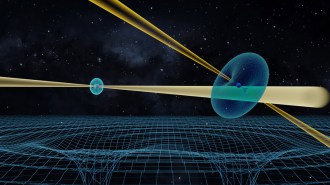 Astronomy
AstronomyThe only known pulsar duo sheds new light on general relativity and more
Einstein was right, among other insights gleaned from watching a one-of-a-kind system of two pulsating dead stars for 16 years.
-
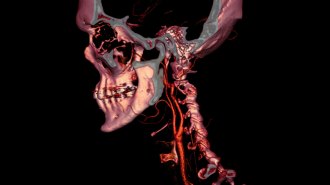 Health & Medicine
Health & MedicineFor 50 years, CT scans have saved lives, revealed beauty and more
In 1971, the first CT scan of a patient laid bare the human brain. That was just the beginning of a whole new way to view human anatomy.
-
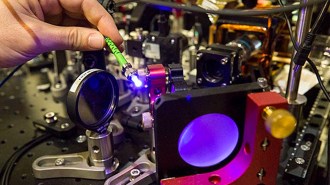 Quantum Physics
Quantum PhysicsPhysicists have coaxed ultracold atoms into an elusive form of quantum matter
Quantum spin liquids could be used to help protect fragile information in quantum computers.
-
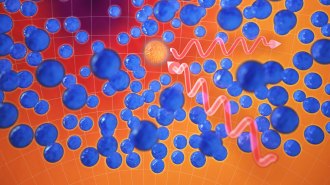 Quantum Physics
Quantum PhysicsScientists finally detected a quantum effect that blocks atoms from scattering light
When all available quantum states are full, atoms can’t scatter light, thanks to the Pauli exclusion principle, new experiments show.
-
 Physics
PhysicsNew high-speed video reveals the physics of a finger snap
Inspired by the infamous snap of the Avengers rival Thanos, scientists set out to investigate the physics behind finger snapping.
-
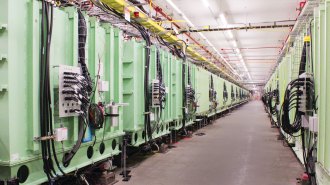 Particle Physics
Particle PhysicsA new particle accelerator aims to unlock secrets of bizarre atomic nuclei
The Facility for Rare Isotope Beams will help scientists unlock the inner workings of atomic nuclei and explore how elements formed in the cosmos.
-
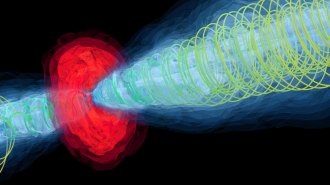 Space
SpaceA stunning simulation re-creates how M87’s black hole launches plasma jets
Two jets, thousands of light-years long, are re-created in a computer simulation, which suggests that M87’s black hole must be spinning rapidly.
-
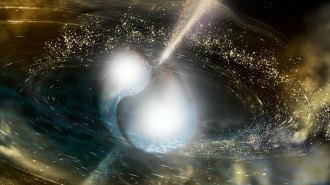 Physics
PhysicsNeutron star collisions probably make more gold than other cosmic smashups
Smashups of two neutron stars produce more heavy elements than when a black hole swallows a neutron star, calculations suggest.
-
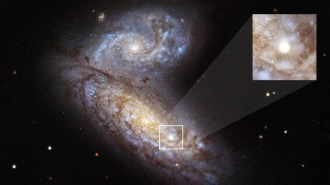 Space
SpaceA rush to watch a supernova exposed its last gasp before exploding
By studying the final years of stars, scientists hope to find clues to help them recognize when other stars are about to blow.
-
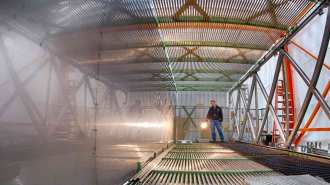 Particle Physics
Particle PhysicsDoubt cast on theorized ‘sterile’ particles leaves a neutrino mystery unsolved
MicroBooNE weakens the case for sterile neutrinos, but the mystery that shrouded earlier neutrino experiments remains.
-
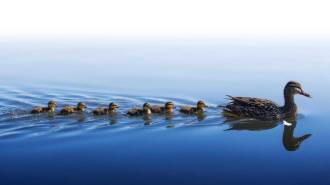 Physics
PhysicsHere’s the physics of why ducklings swim in a row behind their mother
By paddling in just the right spots, ducklings save energy by surfing their mom’s waves, and pass along the benefit to siblings down the line.
-
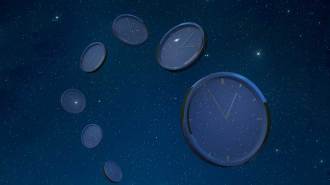 Physics
PhysicsAn atomic clock measured how general relativity warps time across a millimeter
A record-breaking result reveals the precision achievable by atomic clocks, letting researchers detect slightly faster ticking over a tiny height change.